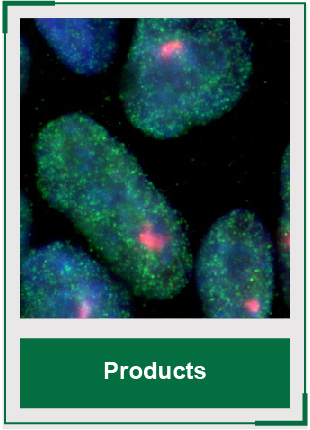Technical Support
[email protected]
Hot Products
- Human Orbital Fibroblasts
- Human Microglia
- Human Pulmonary Alveolar Epithelial Cells
- Human Colonic Fibroblasts
- Human Type II Alveolar Epithelial Cells
- Human Valvular Interstitial Cells
- Human Thyroid Epithelial Cells
- C57BL/6 Mouse Dermal Fibroblasts
- Human Alveolar Macrophages
- Human Dermal Fibroblasts, Adult
- Human Lung Fibroblasts, Adult
- Human Retinal Muller Cells
- Human Articular Chondrocytes
- Human Retinal Pigment Epithelial Cells
- Human Pancreatic Islets of Langerhans Cells
- Human Kidney Podocyte Cells
- Human Renal Proximal Tubule Cells
-
What is the recommended number of cells to subculture? And how many cells are expected after subculture?
The recommended number of cells to seed varies.
For example, it is suggested to seed out at ca. 0.8 x 10^6 cells/ml. The viability may drop to about 50% but cells will recover within a week; then maintain at 0.3-1.0 x 10^6 cells/ml; split 1:2 to 1:4 every second day.
-
Do we have to buy media separately?
We provide media for some products. Customers can purchase media together with products or separately. Our sales team would recommend the corresponding medium for you when inquiring.
-
Can we try a sample in a pilot experiment, and pay after the experiment works?
We do not provide samples for pilot experiment. The order will only be shipped after the full payment. And the return is not acceptable.
-
Can you provide STR report?
Yes, STR report can be provided after the purchase.
-
Can we inject your tumor cells directly into mice to form a tumor? Or do we need to expand them and inject fresh cells?
In vitro cell culture is required before injection. After confirming that the cells are in good condition, take the logarithmic growth phase, count and adjust the cells amount before inoculation.
Click the picture or title to enter the corresponding page to browse AcceGen Primary Cells products:
– Human Primary Cells
– Animal Primary CellsFor more detailed or not mentioned technical questions, contact us at +1-862-248-1155 or [email protected], our customer service department is always here to support you.
How to distinguish different types of stem cells? How to differentiate cells by yourself? Here are some basic Q As about Stem/Progenitor cells.
Click the picture or title to enter the corresponding page to browse AcceGen Stem Cells products:
– Embryonic Stem (ES) Cells
– Adult Stem Cells
– Cancer Stem Cells
– Mesenchymal Stem Cells (MSC)
– Induced Pluripotent Stem Cells (iPSCs)For more detailed or not mentioned technical questions, contact us at +1-862-248-1155 or [email protected], our customer service department is always here to support you.
>Here are basic questions about MicroRNA Agomir or Antagomir. If you have specific questions or needs, please contact our customer team directly.
-
Is Mycoplasma test report provided?
We will confirm that there is no mycoplasma contamination before shipping. But Mycoplasma report is not available for all products. Please contact our sales team via [email protected] for specific information.

Click the picture or title to enter the corresponding page to browse AcceGen products:
– Primary Cells
– Tumor Cell Lines
– Stem Cells
– MicroRNA Agomir/Antagomir
– Immortalized Cell Lines
– Reporter Cell LinesFor more detailed or not mentioned technical questions, contact us at +1-862-248-1155 or [email protected], our customer service department is always here to support you.
Hard to determine which type of cell to buy? Confused about the cell proliferation or reservation? Check FAQs for Primary Cells to find the answer.
-
How to determine cell type?
Actually, cell type can be confirmed in multiple ways. We usually take the morphology of cells as one of the most important ways to identify the correct cells. Besides, we also use immunofluorescence to confirm the presence of identifying markers for some of the cell types.
-
Which QC tests are performed on?
1. Sterility: Negative for contamination that includes bacterial, fungal, Mycoplasma (PCR), and negative for human pathogens;
2.Viability: >95% post-thaw viability;
3.Identity: Using Short Tandem Repeat (STR) analysis, 16 probes (15 STR loci plus Amelogenin) are checked;
4.Growth: based on the morphology, immunocytochemistry of multiple undifferentiation markers.
-
Do you have a Safety Data Sheet or risk group/biosafety level information that you can provide me?
We have relevant MSDS documents. Please fill out the inquiry form or send an email to [email protected] to request the needed documents.
-
What are the unit sizes of the cells?
It depends, we usually provide 0.5M, 1M, 5M, or 10M on most of our cryopreserved cells.




